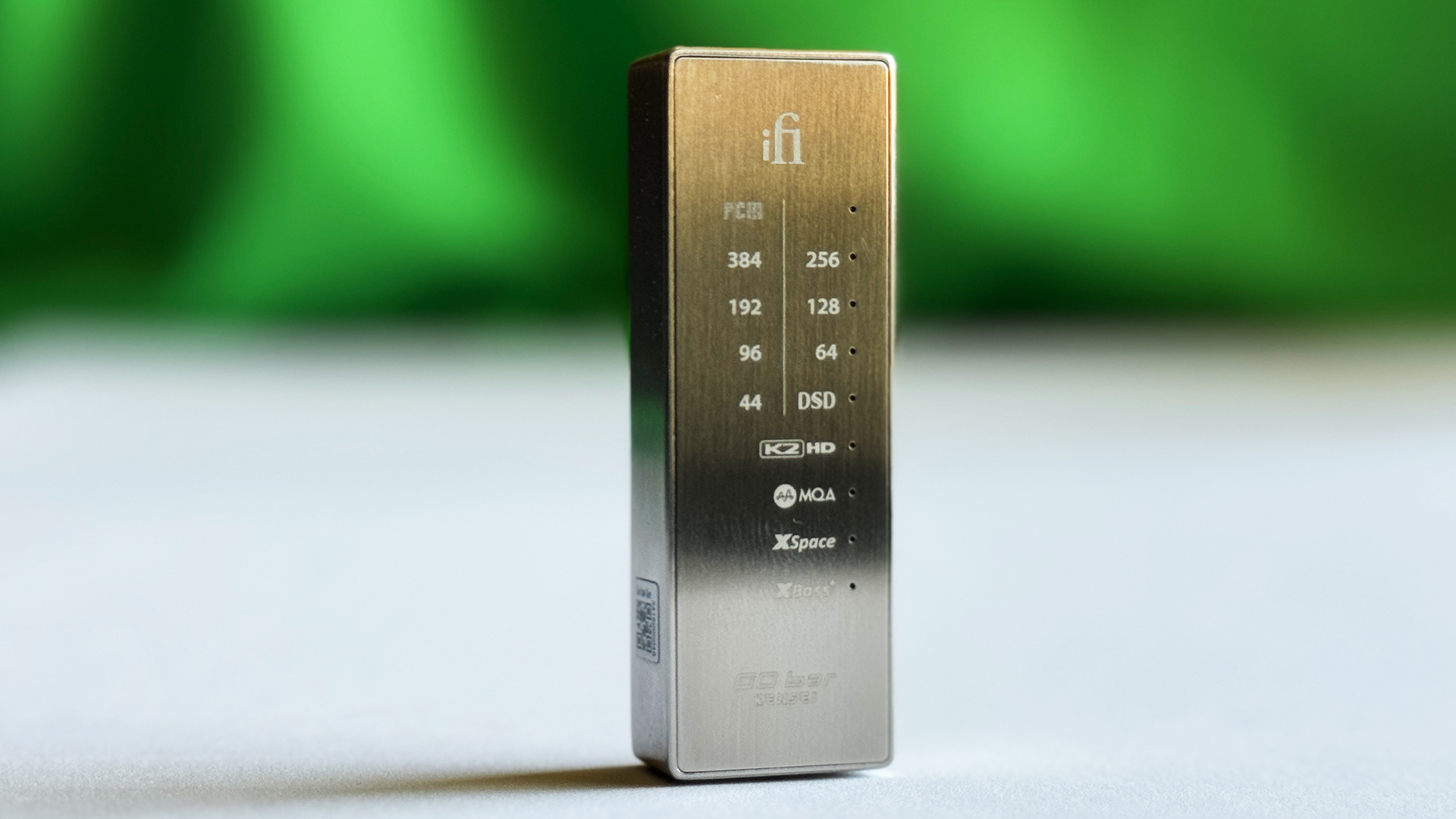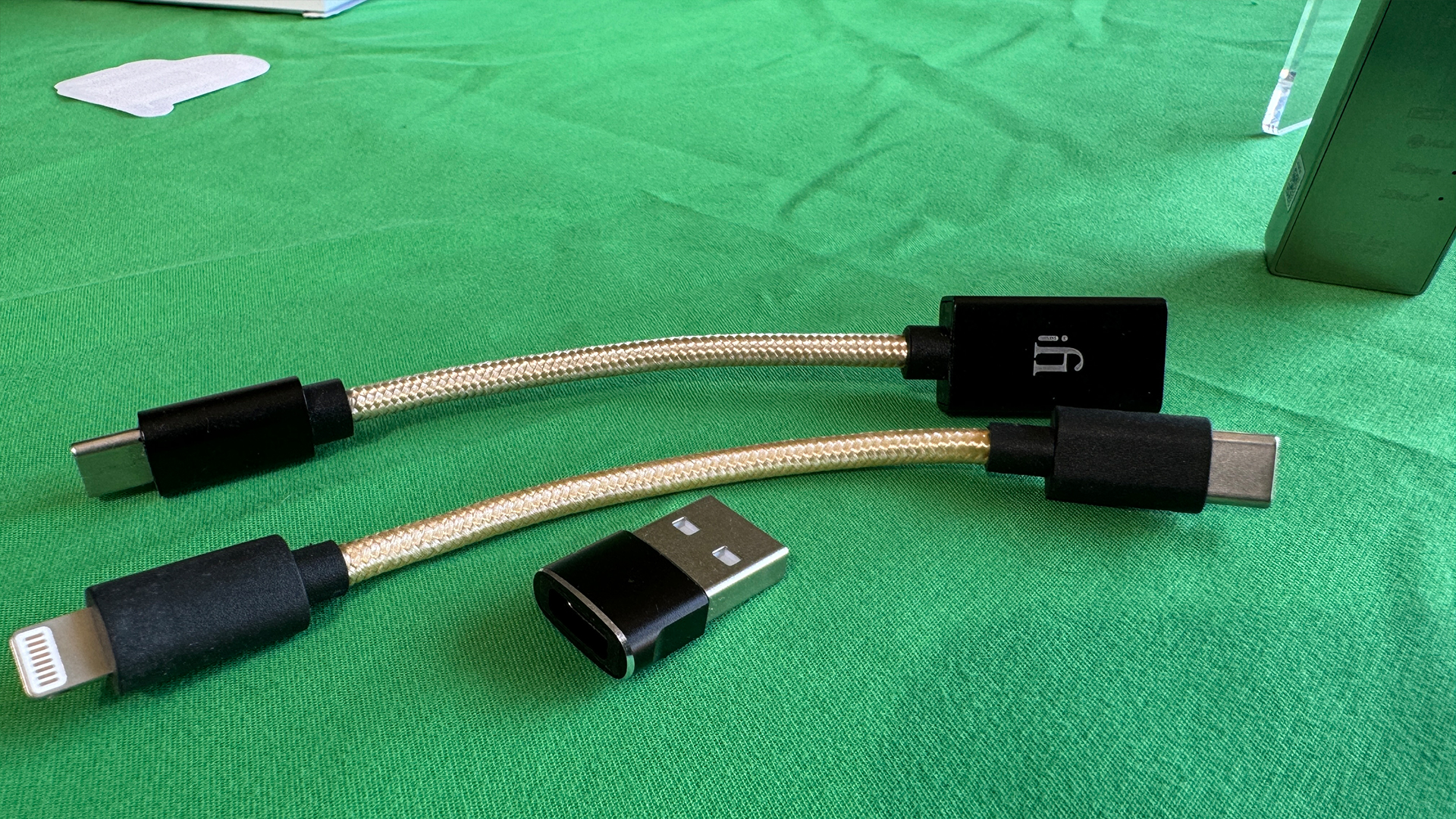[ad_1]
“Kensei” is an honorary Japanese title bestowed upon swordsmen of legendary skill. The word translates to “Sword Saint,” and it is the relentless commitment to being the best that iFi channeled into the masterfully crafted product that is the iFi Kensei.
This is truly a tool for the audiophile, so without getting too deep into the weeds, we’re going to get a bit more technical in this review than normal, with an eye on keeping it accessible.
iFi GO bar Kensei: Price and availability
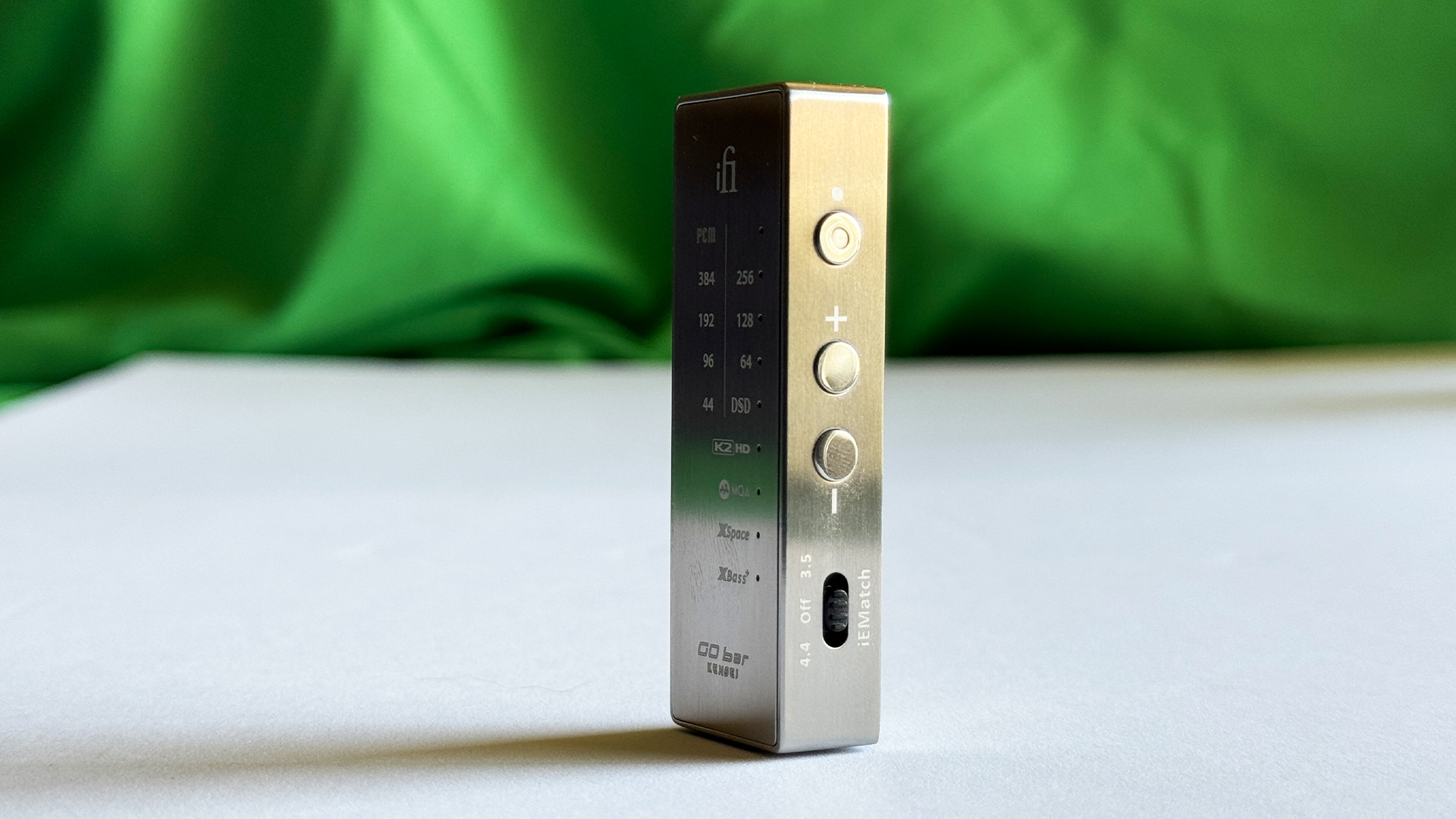
The iFi GO bar Kensei is available from ifi-audio.com, Amazon and other online retailers like Sweetwater, for $449. Unlike the iFi Gold bar, this is not a limited run and will be around for a while according to an iFi rep’s comments on a HiFi user forum sponsored by iFi.
iFi GO bar Kensei: Build and fit
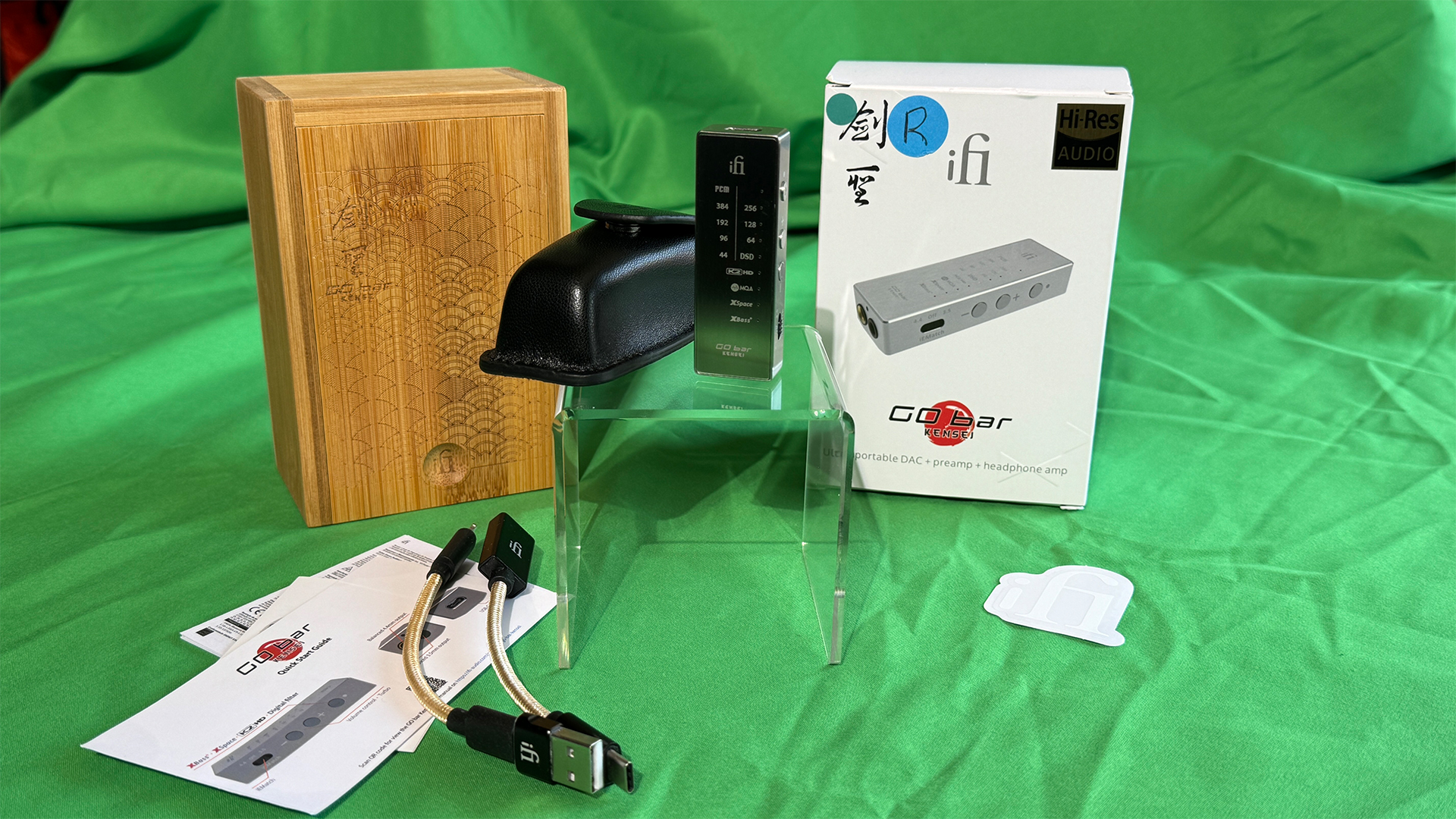
Unboxing the Kensei is an experience. It’s set in a beautiful, environmentally friendly, carved wooden box. You get two premium braided cables (USB-C, USB-C to Lightning with USB-A adapter) and a leather pouch. No bigger than a USB flash drive, the GO bar Kensei is made with Japanese stainless steel and is deceptively heavy for its size. Its body has chamfered edges and feels premium all the way around, though it does attract fingerprints like a magnet. It has branding beautifully etched into the underside of the bar, but the face is where it gets exciting.
On the face, you’ll find a panel with LEDs that indicate volume level, audio format, frequency, and sound effects. The right side is where you’ll find the volume and settings push buttons, as well as the IEMatch switch. The top of the device is where the 3.5mm and 4.4mm headphone outputs are found, and the bottom is where you’ll find the USB-C input, which supports up to 32-bit/384kHz audio.
The Go bar Kensei gets a bit warm during use, but not uncomfortably. Though it is dense and has good heft, the stainless steel is a bit soft when it comes to external wear and will show scratches and scuffs.
iFi GO bar Kensei: Features
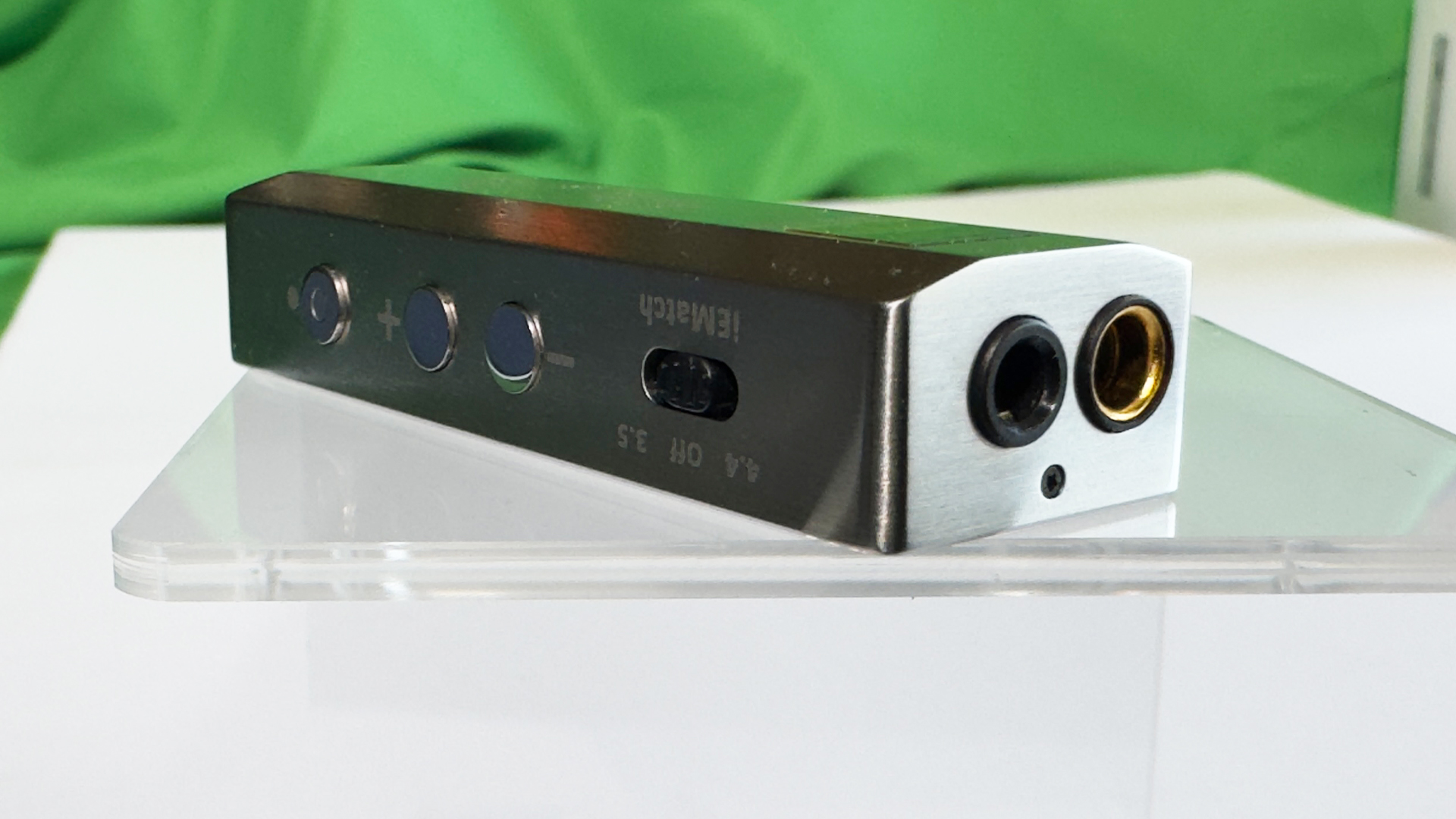
The GO bar Kensei uses a 32-bit Cirrus Logic DAC chipset with Hi-Res True Native® playback of music formats from MP3 to DSD256, PCM384, and DXD384. You also get full MQA decoding. The Kensei is chock full of high-end capacitors, which give you a clean signal, reduce potential distortion, and have premium noise-reduction capabilities. You can read about those in detail here.
The stars of the show are the four digital filters and two analog modes. The modes and their corresponding LEDs are:
Bit-Perfect (cyan) I ran this with the Sennheiser IE900 IEMs, and it was bright without sibilance and transparent. This one gives you your Hi-Res or lossless audio just as it was intended.
Standard (red) came across as “smooth,” with warmth in the vocals instead of brightness.
Minimum phase (yellow) is warmer but with tight bass. If you’re a basshead, this is the filter for you. Use it with the XBass filter turned on and the K2HD filter activated, and you’ll get kick-you-in-the-face bass with no loss of mids and vocal clarity.
Gibbs Transient-Optimised (white) upsamples your audio to 352/384kHz. I’d just describe this one as “energetic” overall. You’ll feel it across the frequency range.
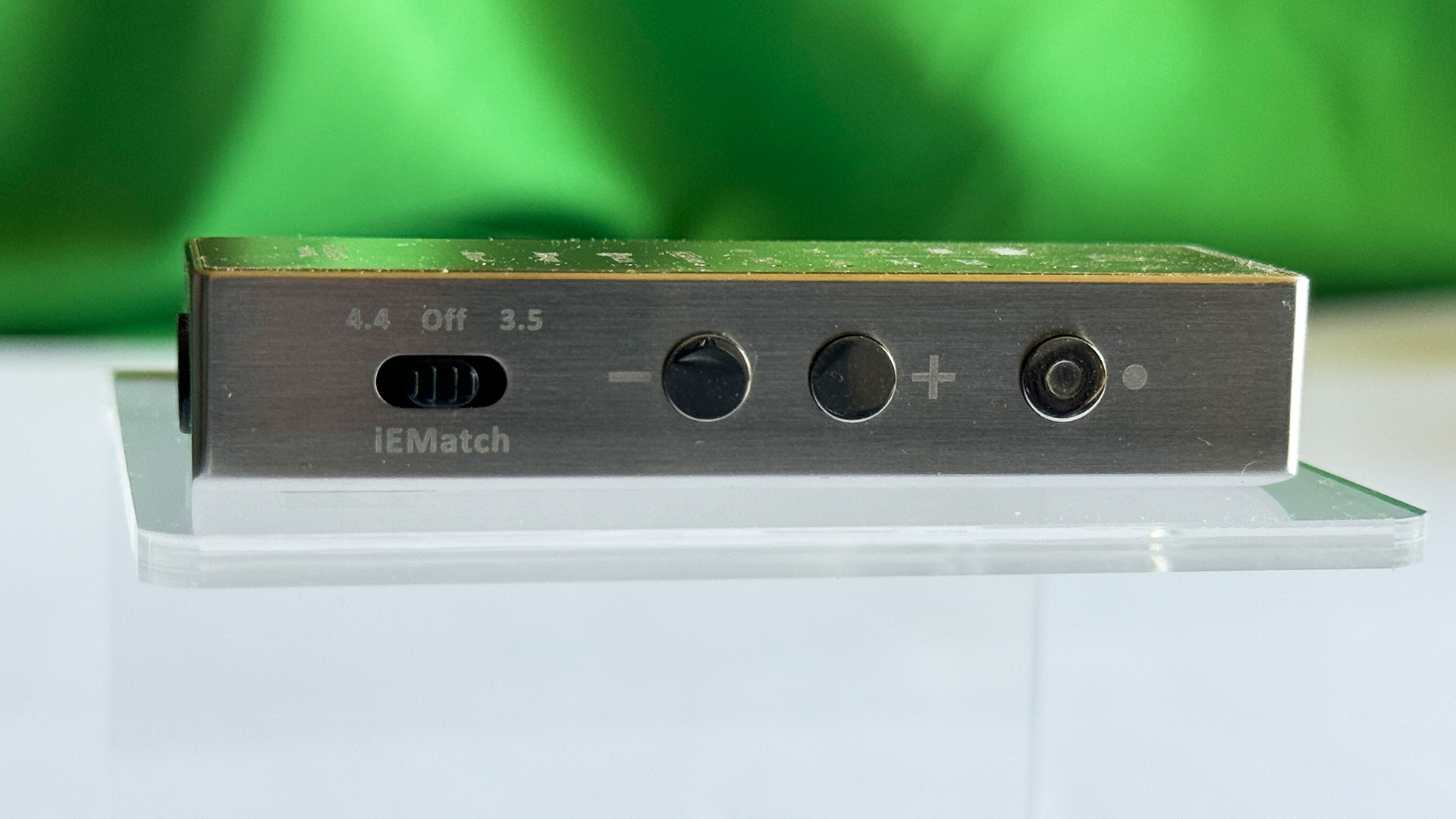
The Kensei goes a long way to make sure every headphone or IEM you plug up is treated well with their IEMatch switch, which reduces output for high-sensitivity IEMs like the Campfire Audio Mammoths I played with, and their Turbo Mode, which does the opposite and increases gain by 6dB to drive power hungry headphones like the HiFiMan Planar magnetics I used. It isn’t like the Kensei lacks the power to drive what you throw at it, with 477mW or 7.2V out of the 4.4mm output and 300mW or 8V out of the 3.5 S-Balanced output.
Regarding volume level output, you can control source audio from the Kensei in sync with the source device or bypass the source device’s audio controls altogether.
The downside to all of the amazing power unleashed upon your ears is that you’ll experience a decent amount of battery drain from your phones and tablets since that’s what powers the Kensei via that USB-C port. Your laptops won’t be as noticeable since they have larger batteries, and you can easily charge while listening, but that drain is there. There is no internal battery here like the iFi GO blu.
iFi GO bar Kensei: Sound quality
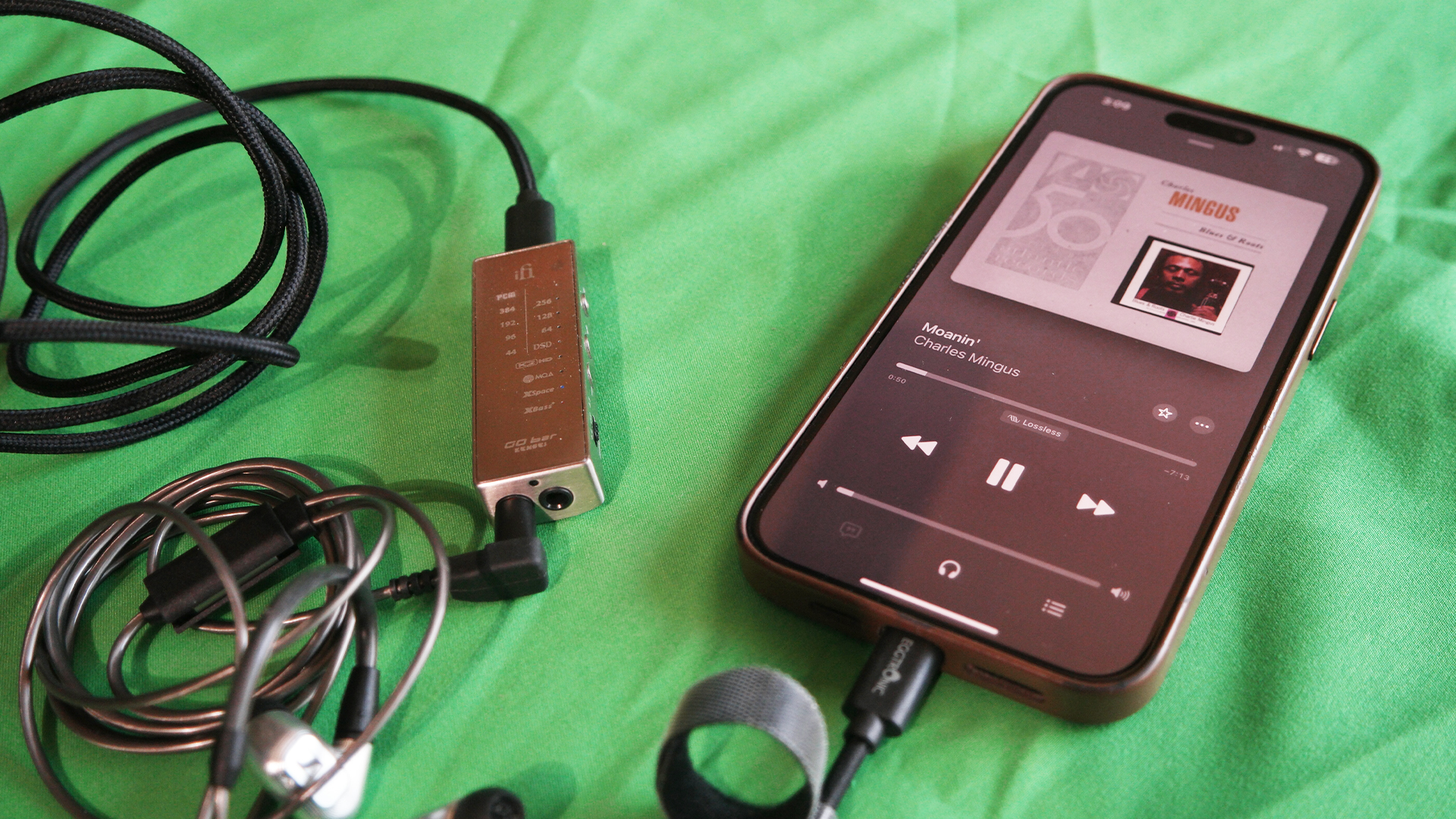
The “Sword Saint” produces audio that is, in a word, “ethereal” but full-bodied. It’s all there. The sound quality out of both the 3.5mm and 4.4mm ports is effortless, with beautiful musicality.
This transparent DAC/Amp allows you to enjoy every nuance of a stereo image. Pair the Kensei with analytical headphones or IEMs, and it’s like turning on a floodlight in a large space previously lit by a small 40-watt bulb. That’s exactly what I experienced when I plugged Sennheieser’s IE900 IEMs into the 4.4mm balanced output with the bit-perfect digital filter.
Listening to “Violin Duel” from the Chevalier OST was illuminating. You could hear artifacts and nuances I’d previously missed. The tension of the bow against the violin strings. The attack on the chord changes, whereas before, I really only heard the attack in different movements. Same with Beyonce’s “Texas Hold ‘Em” where the plucking of the banjo and guitars, still layered toward the back, was richly detailed.
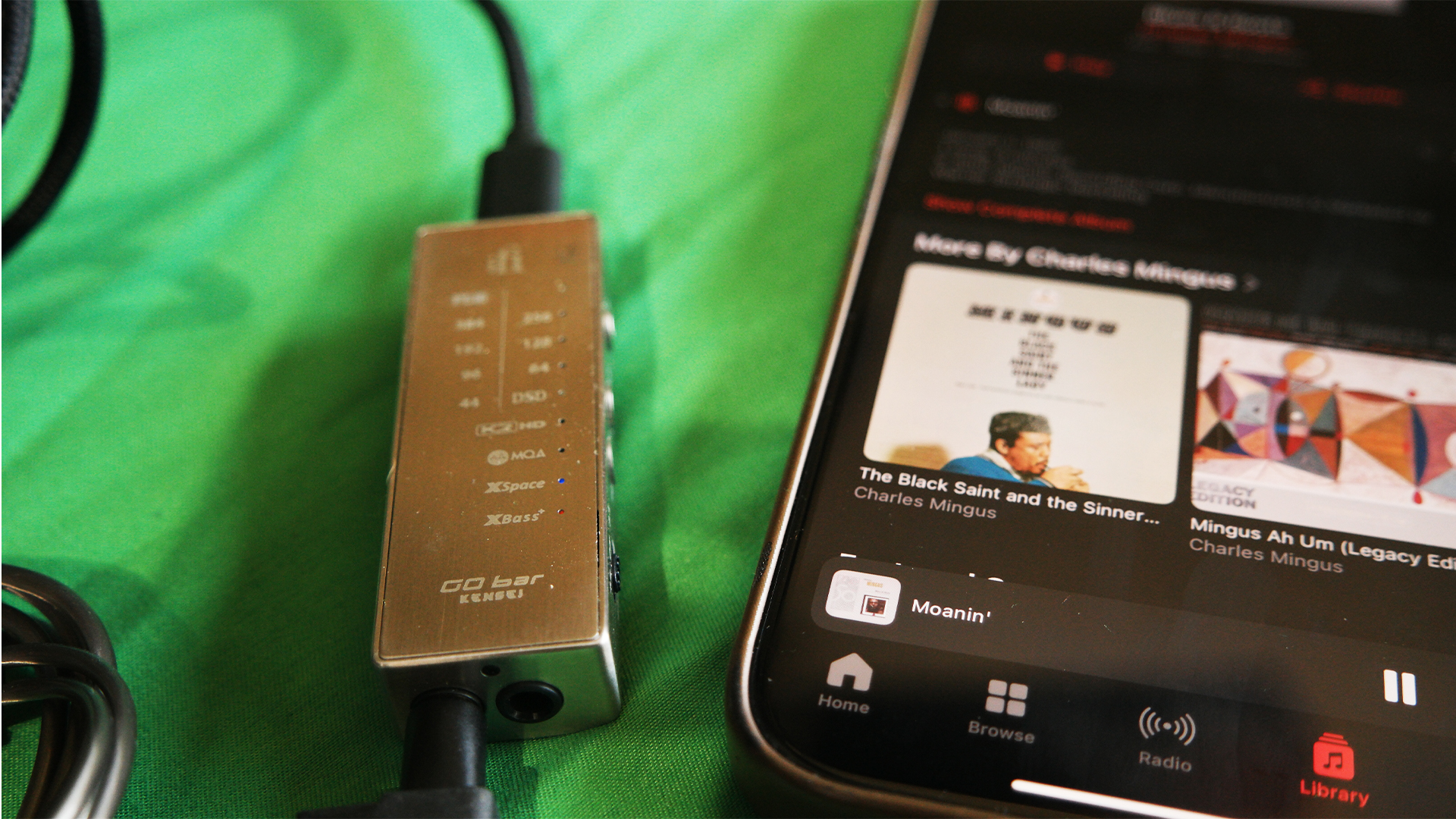
When it comes to bass and sub-bass, the transparency really shows how a track was engineered. The IE900 isn’t a bass-heavy IEM, but its 7mm dynamic drivers can energetically play back deep, dark bass via PEQ or digital filter tuning, as was the case with iFi’s XBass filter activated. Skrillex’s “Mumbai Power” and “Start A Riot” from the Spider-Man: Across the Spider-Verse soundtrack both growled and rumbled with enough authority and aggression that they had me making the “stank face” while bobbing my head to that nasty bass and sub-bass. That led me down the rabbit hole of sampling a dozen or so hip-hop tracks with this IEM/DAC filter combo.
What’s important here is that the digital filters I mentioned in the features section may make your music sound even better depending on which IEMs or headphones you’ve paired to the Kensei. For example, I ran the $120 1MORE Penta Driver IEMs, which don’t have nearly the level of transparency of the IE900, but with the K2HD, XBass, and XSpace filters activated, they open up and give the listening experience quite a bit more than what their default tuning offers.
iFi GO bar Kensei: Competition

The GO bar Kensei is unique in that it is more like a collector’s edition DAC, with its ornate box, accessories, and fit and finish. In this price point, there are however competitors with various feature offerings. Fiio makes excellent products and the Q15 may be a better fit for some folks’ listening habits as it has a built-in IPS display and a Bluetooth SoC, giving you access to wireless hi-res audio connectivity.
Then there’s the iBasso DC-Elite, which I tried unsuccessfully to get my hands on for a separate review. It has a feature set that matches closely the Kensei, and a design that is eye-catching. On paper, it appears to be a worthy competitor and is generally regarded as a solid piece of kit.
iFi GO bar Kensei: Should you buy it?

You should buy the iFi GO bar Kensei if…
- You don’t need Bluetooth
- You like DACs with transparent sound
- You don’t want PEQ
You shouldn’t buy the iFi GO bar Kensei if…
- Price is a concern
- You need Bluetooth
- You want PEQ
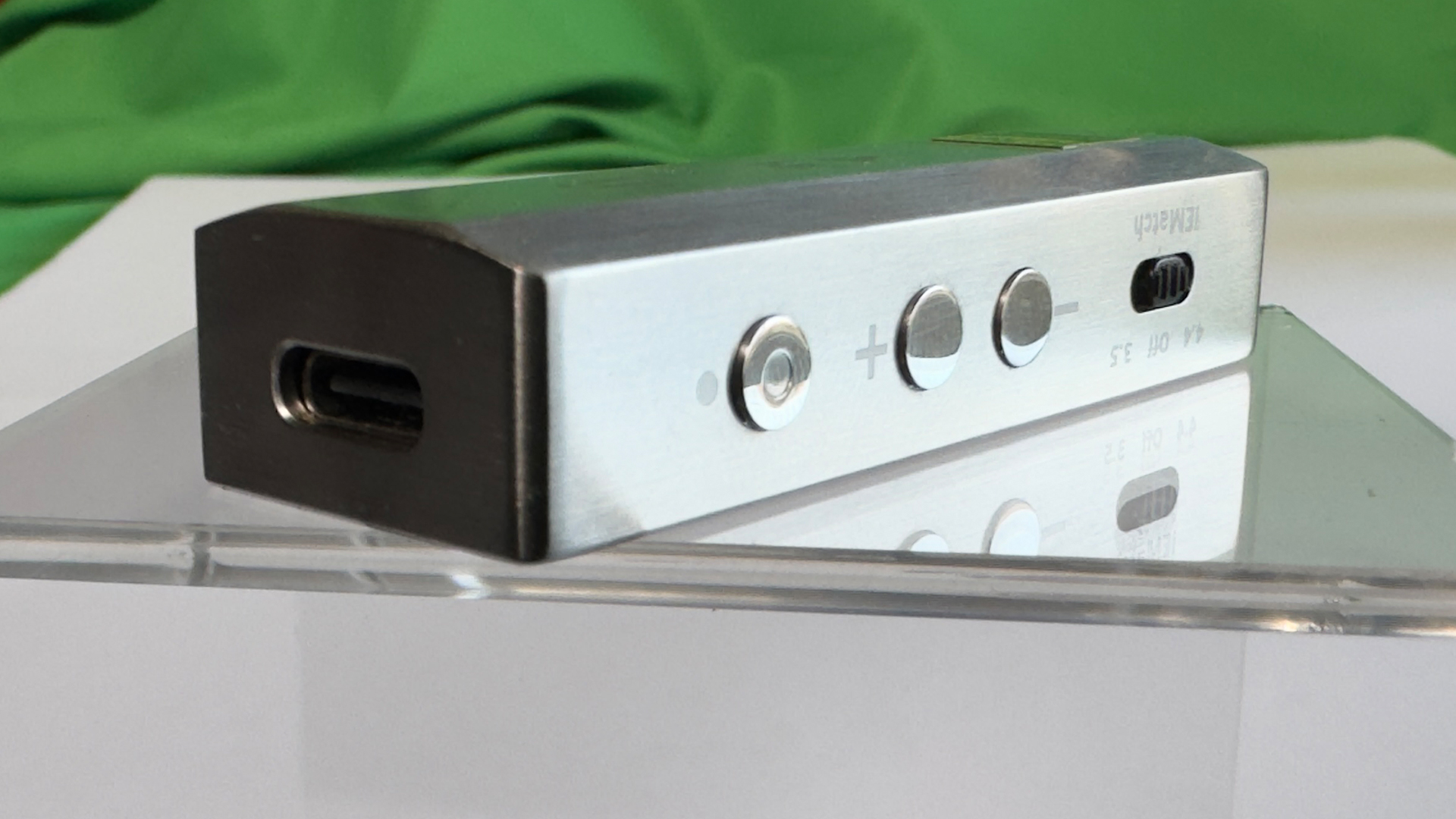
The GO bar Kensie is transparent without being harsh or overly smooth. It pairs perfectly with musical IEMs, it’s digital filters give you greater options as you pair it with different headphones or IEMs and the analog processing modes XBass Plus and XSpace breathe new bass and sub-bass life into open-back over-ears. All of this while efficiently driving everything I’ve thrown at it, even though that comes at the cost of your mobile audio source’s battery life.
This DAC/Amp will be pricey for casual music consumers. For audio hobbyists, it is feature-rich and built like a tank, so it should give you years of listening pleasure on the go.
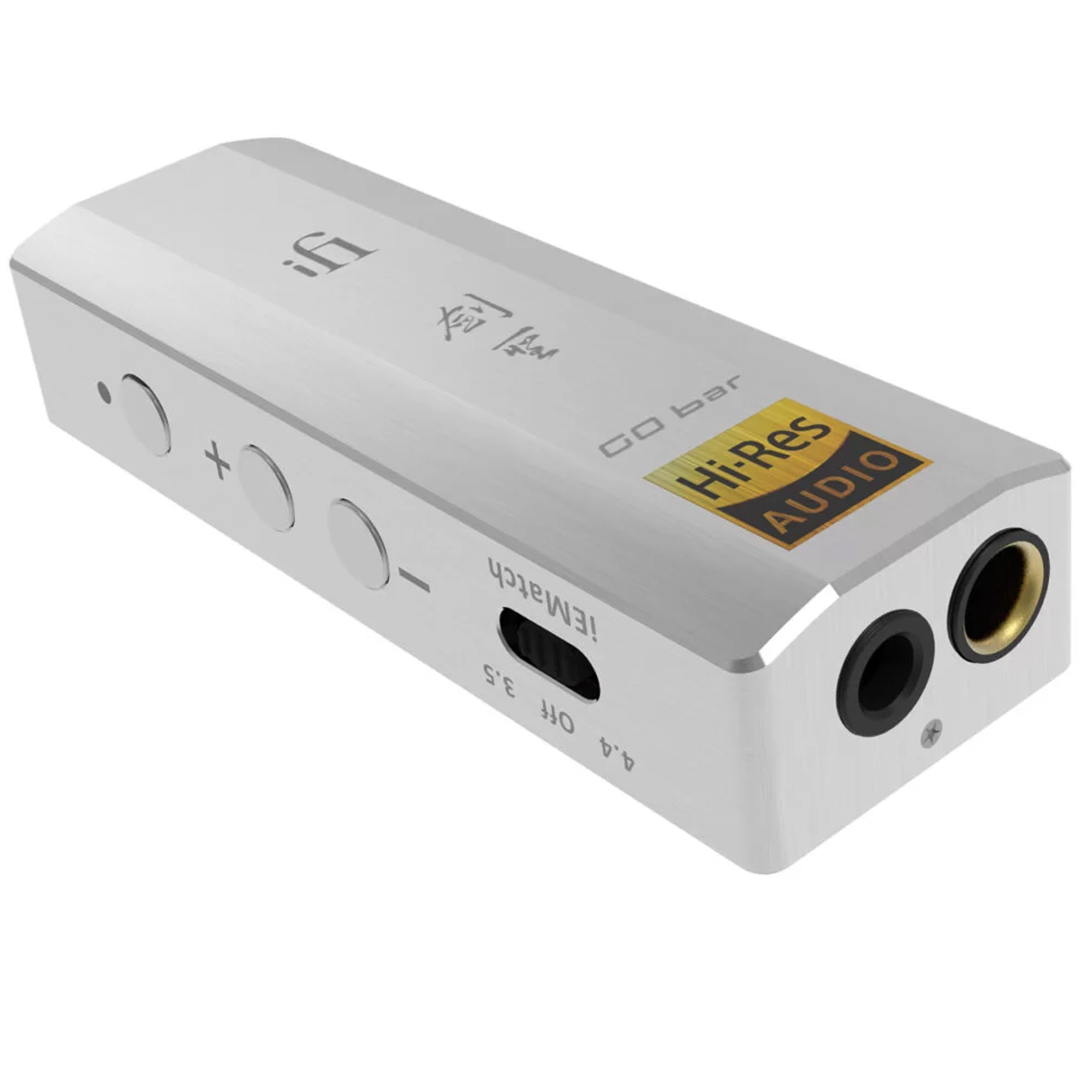
Amazing sound and features!
For it’s transparency, ability to kick up the bass enjoyment, and balanced output, the GO bar Kensei is one of the best mobile DACs you can buy!



